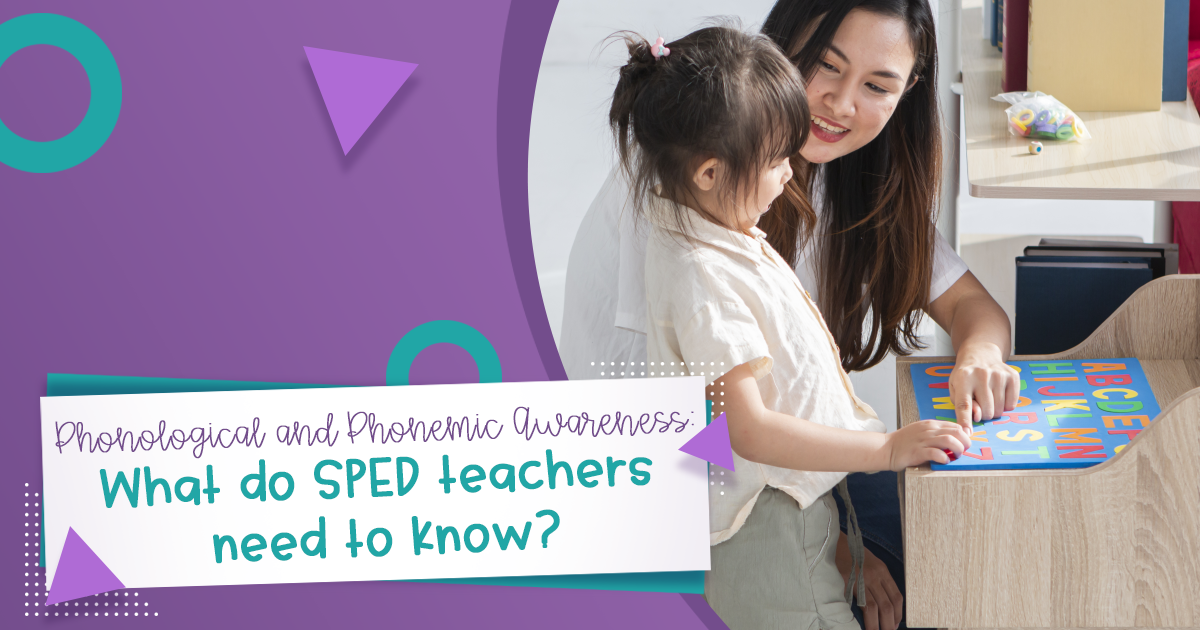
Phonological and Phonemic Awareness are two critical literacy skills that a student must learn to become good readers. It is important as special education teachers that we know what each one of these skills are and how to use them to help our students become successful readers.
Phonemic Awareness is a narrow, specific term that refers to activities that ask students to isolate or produce a sound. For example, asking students to tell the beginning sound in BUG or the ending sound in BUG.
Phonological Awareness is a broad term that refers to activities that requires students to analyze the structure of a word. For example, giving students three words and asking which words rhyme? Which words have the same beginning sound? Ending sound? Phonological Awareness activities can also require students to say a rhyme or another word with the same beginning or ending sound.
My mind is mathematical. Phonological Awareness and Phonemic Awareness remind me of the rectangle and the square in shape hierarchy. The picture above is for reference. If this offers more confusion than clarification, keep skimming! 😆
“Phonemic Awareness is more highly correlated to the process of learning to read than intelligence, reading readiness, or listening comprehension.”
Stanovich, 1988, 1993
Phonological Awareness develops gradually. The gradual development happens whether a student has a learning disabilities or not! We must meet them where they are and gradually grow those skills.
3 Steps to Spelling One Syllable Words
Step One: Phonological Awareness
The first step to spelling a word is to identify the sounds within a word. What phonemes do we hear? In the word BONES, what sounds do you hear? I like to have my students count the sounds.
Step Two: Orthographic Awareness
Now that we know what and how many sounds, it’s time to match these phonemes to graphemes. Remember, we have 250 graphemes, so this part can get difficult.
Taking each phoneme one at a time, we can do our best to help our students match the phonemes we hear to the graphemes we know.
Step Three: Morphological Awareness
During this step, we are looking at the “chunks” of words. In this example, the word bones is plural. Now, that we have BONE written, it’s time to add the S to make it plural. Common endings that I practice with my students regularly are S, ED, and ING.
In later years, students should also practice Greek and Latin Roots.
When practicing these three steps, choose words that align with the graphemes that they know. It’s great to spiral review throughout your practice of a new grapheme.
When writing independently, encourage inventive spelling. No one knows how to spell every single word. We have to use what we know. In first grade, do we know all eight long a sounds? No! But we might know a handful and can work with that.
